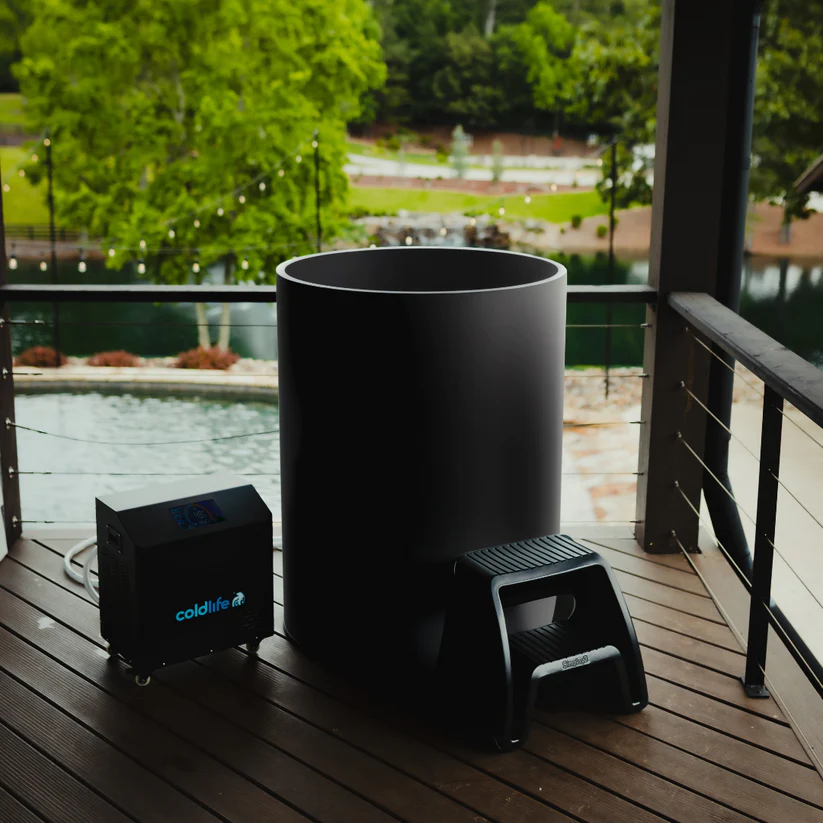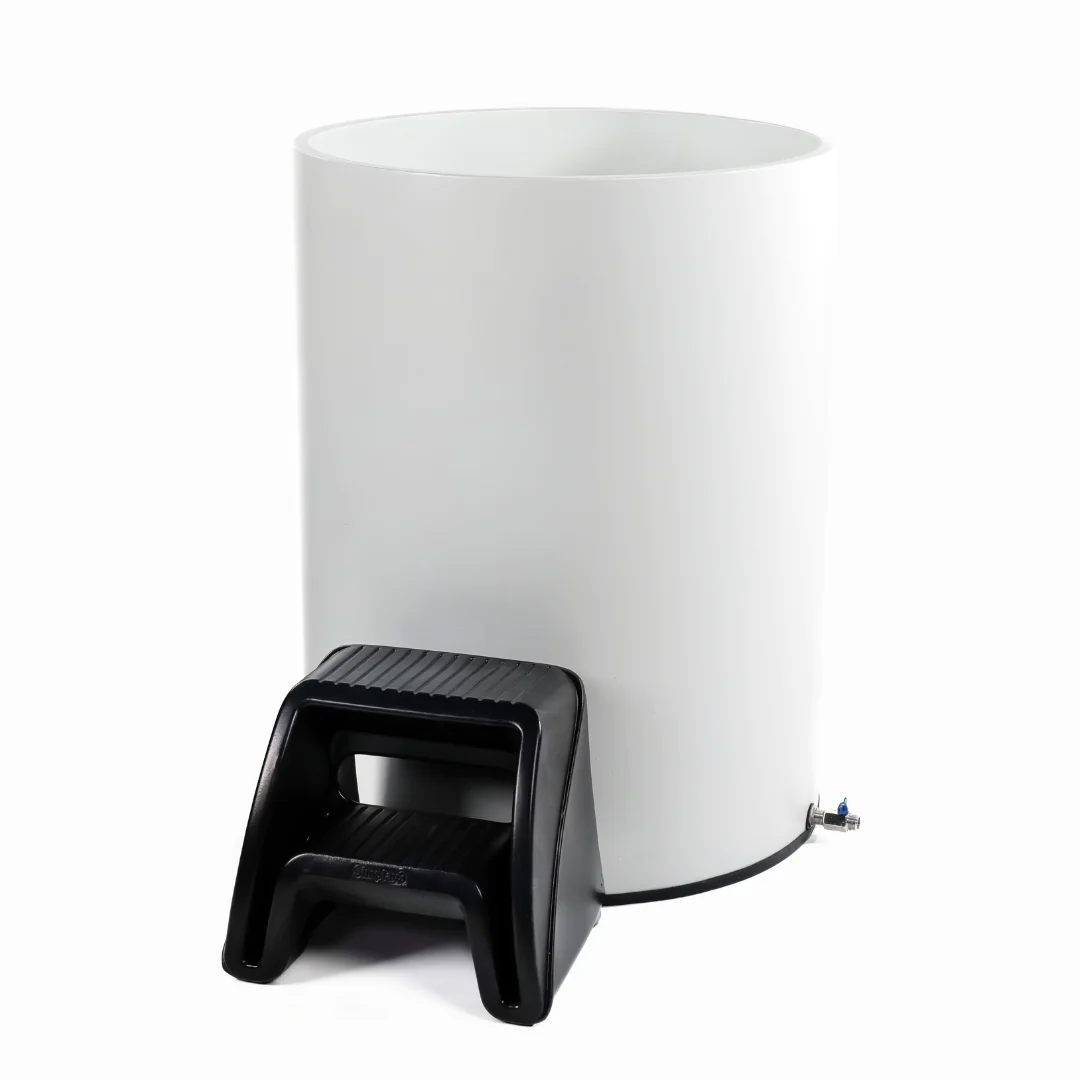Key Takeaways – How cold is too cold for ice plunge.
Takeaway 1: The optimal temperature for an ice plunge is between 50-60 degrees Fahrenheit.
So, you’re thinking about taking the plunge into icy waters, huh? Well, let me tell you, there’s an ideal temperature range for that. Believe it or not, it’s between 50 and 60 degrees Fahrenheit (or 10-15 degrees Celsius if that’s more your style). This range has been found to be both safe and therapeutic, giving you all those amazing health benefits. So, don’t go jumping into anything colder or hotter than that!Takeaway 2: Listen to your body and avoid temperatures below 50°F.
Now here’s some advice straight from the trenches – listen to your body! If those chilly waters start dipping below the magical 50-degree mark (10°C), you might want to think twice before taking the plunge. Trust me when I say this: discomfort, numbness, and even frostbite are no fun at all. So err on the side of caution and stay away from anything too cold.Takeaway 3: Start at warmer temperatures if you’re a beginner.
We’ve all got to start somewhere, right? Well, when it comes to ice plunges or ice baths, starting at extreme cold temperatures might not be the best idea. Instead, ease yourself into it by starting with a warmer temperature and gradually working your way down. It may take a bit longer to reach ultimate chill status, but trust me – your body will thank you. Remember though folks! Before embarking on any cold therapy routines like this one, make sure to consult with a healthcare professional first. They’ll give you all the personalized advice and guidance needed to avoid any potential risks or medical complications along the way. Now go forth my icy friends! Dive into those frigid waters, embrace the chills, and reap the rewards of muscle recovery and improved circulation. Just be sure to stay within that optimal temperature range and listen to what your body is telling you. Stay safe and enjoy the frosty journey!Our #1 Best Recommended Cold Plunge
1. For those who love the chill and thrill, our The Cold Life section would be an interesting read. 2. Explore more about life in freezing conditions by visiting our The Cold Life page. 3. If you are intrigued by life in sub-zero temperatures, don’t miss out on our The Cold Life segment.Are you ready to redefine your limits with cold immersion?
Explore the compelling truth behind cold plunging and its remarkable benefits for mind and body.
Dive into the Cold Life Plunge Bundle now to embark on your journey to revitalization and strength. Transform your life today!
Here’s a Youtube Video about How cold is too cold for ice plunge.
When considering an exhilarating ice plunge, one might wonder, “how cold is too cold for an ice plunge?”. Based on research and expert advice, it’s generally understood that the temperature should be between 10-15°C (50-59°F).
Benefits of Ice Plunges at Safe Temperatures include improved circulation, reduced muscle inflammation, and boosted mood. However, it’s crucial to always tune in to your body and Listen to Your Body During an Ice Plunge.
Remember there are significant Risks Involved with Extremely Cold Temperatures in Ice Baths, including hypothermia or cold shock. For those new to this practice, we recommend Starting Cold Therapy with Gradual Temperature Drops: Recommendations for Beginners.
To ensure your safety and effectiveness of the practice,Consulting a Healthcare Professional Before Beginning Ice Plunges is highly advised.

Understanding the Optimal Temperature for an Ice Plunge
When it comes to ice plunges, temperature indeed plays a pivotal role. Now that I think about it, the optimal temperature for such a chilly endeavor should ideally fall within the range of 50-60 degrees Fahrenheit (10-15 degrees Celsius). This is commonly referred as the optimum temperature for ice plunge. It’s fascinating to note that this temperature range strikes a balance between being therapeutic and safe.

Download this courtesy guide to optimize your sauna and cold plunge experience and health optimization.
Download the Free Guide TodayBenefits of Ice Plunges at Safe Temperatures
All things considered, the benefits of sticking to this ice bath temperature goes beyond just comfort. Adhering to these guidelines not only shields you from potential health risks such as hypothermia from ice bath, but also packs an array of health benefits. You see, staying within these temperatures can boost muscle recovery and improve circulation, which are undeniably crucial elements in any recovery or wellness routine.
Listening to Your Body During an Ice Plunge
In any case, irrespective of how cold is too cold for ice plunge, it’s vital that you listen attentively to your body throughout each session. If you start feeling discomfort or numbness – signs often associated with extreme cold water swimming risks – then perhaps you’re pushing past what your body can handle safely.
[h2]Risks Involved with Extremely Cold Temperatures in Ice Baths Risks of too cold ice bath, unfortunately include numbness and even frostbite if precautions aren’t taken. Temperatures below 50°F (10°C) are generally considered too cold – stepping into such freezing-cold baths could potentially lead to unpleasant and harmful effects.Starting Cold Therapy with Gradual Temperature Drops: Recommendations for Beginners
If you’re new to this invigorating world of cold water immersion, you’re advised not begin at extreme temperatures. Starting at a slightly warmer temperature and gradually reducing it could be a more beneficial and comfortable approach, thus enhancing your overall experience.
Consulting a Healthcare Professional Before Beginning Ice Plunges
It’s always wise, by the way, to consult with a healthcare professional before embarking on regular ice plunges or any form of cold therapy routine. This step ensures you’re well aware of all safety measures for ice plunge, aiding in avoiding unwanted medical complications or risks.

Sure, as a passionate cold plunge enthusiast, you’re probably wondering “When is a cold plunge too cold?” or what temperature is considered too chilly for this activity. We’ve got some expert insights on our blog “What Temp Is Too Cold For Cold Plunge?” that discuss this in detail tag. Tag, It’s also important to understand the potential risks of overdoing it. The question of “Is Too Much Cold Plunge Bad?” is explored from a professional perspective on our website, providing solid advice for those who might be taking their passion for chilling to the extreme. With all these freezing adventures, have you ever wondered about the transition from hot to cold? You might find our post “What Happens When You Go From Sauna To Cold Plunge” interesting tag. A common concern that many have before jumping into the icy waters is regarding health implications. Our post titled “Is A Cold Plunge Bad For Your Heart?” delves into this topic, unraveling facts and myths alike tag. Lastly, if you are someone who wants to incorporate plunging into your routine but not sure about an ideal temperature, check out our post on “What Is A Good Cold Plunge Temperature?” tag. Stay informed and stay safe as you brave the cold plunge!
My Personal Take about How cold is too cold for ice plunge.
Hello there, my friend! As someone who knows a thing or two about saunas and ice plunges – or in other words, I’m George, your friendly neighborhood expert – I often get asked: “How cold is too cold for an ice plunge?“
Now that I think about it, this question is not only normal but also critical for ensuring you’re enjoying the chilling activity safely. Understanding safe temperatures for this activity can make all the difference between an exhilarating experience and an unnecessary hospital trip.
In any case, don’t let that scare you off. You see, with the right knowledge (which I’d be more than happy to share in my blog post), you’ll soon be enjoying this sensational experience just like the Scandinavians do! And who knows? You might even catch yourself looking forward to your next sauna session or cold plunge. So here’s a toast: To better health and thrilling experiences!
Our #1 Best Recommended Cold Plunge for most People
If you’re considering an ice plunge, it’s important to understand the safe temperatures for this chilling activity. Too cold can be dangerous, so knowing how cold is too cold is essential. Visit our site and stay educated on all aspects of the cold life.Discover the unparalleled benefits of cold immersion with ColdLife Plunge 1. Unleash your full potential with our innovative cold plunging solution. Explore the transformative effects on your body and mind. Elevate your lifestyle with ColdLife Plunge 1 today!
Frequently Asked Questions about How cold is too cold for ice plunge.
1. How cold is too cold for an ice plunge?
An ice plunge becomes uncomfortable and potentially dangerous once the temperature drops below 50°F (10°C). It’s best to avoid temperatures lower than this range to prevent discomfort, numbness, or even frostbite.
2. What is the optimal temperature for an ice plunge?
The ideal temperature for an ice plunge or bath ranges between 50-60 degrees Fahrenheit (10-15 degrees Celsius). This temperature range is considered safe and offers various health benefits, including muscle recovery and improved circulation.
3. Can I begin with extremely cold temperatures as a beginner?
It’s not recommended for beginners to start with extremely cold temperatures. Instead, starting at a warmer temperature and gradually working your way down can be more beneficial and manageable.
4. What are the potential risks of colder temperatures during an ice plunge?
Colder temperatures during an ice plunge can result in discomfort, numbness, and even frostbite. It’s crucial to listen to your body and avoid going below the safe range of 50°F (10°C) to ensure a safe experience.
5. Are there any specific health benefits associated with an ice plunge?
Absolutely! An ice plunge offers numerous health benefits such as muscle recovery and improved circulation. The cold water stimulates blood flow, reduces inflammation, relieves muscle soreness, and promotes overall well-being.
6. Should I consult a healthcare professional before starting cold therapy routines?
Absolutely! It’s always wise to consult with a healthcare professional before incorporating any new therapy routines into your lifestyle. This ensures that you avoid any potential risks or medical complications that may arise from individual circumstances.
Now you know How cold is too cold for ice plunge. , but that’s only the beginning of your journey here at Sweat N Chill Zone. If you found this post useful there’s more to learn to get you to the next step of your sauna & cold plunge journey. If you read our next articles you’ll be a step further than most people.
Before you go…
Takeaway 1: The optimal temperature for an ice plunge is between 50-60 degrees Fahrenheit.
So, you’re thinking about taking the plunge into icy waters, huh? Well, let me tell you, there’s an ideal temperature range for that. Believe it or not, it’s between 50 and 60 degrees Fahrenheit (or 10-15 degrees Celsius if that’s more your style). This range has been found to be both safe and therapeutic, giving you all those amazing health benefits. So, don’t go jumping into anything colder or hotter than that!Takeaway 2: Listen to your body and avoid temperatures below 50°F.
Now here’s some advice straight from the trenches – listen to your body! If those chilly waters start dipping below the magical 50-degree mark (10°C), you might want to think twice before taking the plunge. Trust me when I say this: discomfort, numbness, and even frostbite are no fun at all. So err on the side of caution and stay away from anything too cold.Takeaway 3: Start at warmer temperatures if you’re a beginner.
We’ve all got to start somewhere, right? Well, when it comes to ice plunges or ice baths, starting at extreme cold temperatures might not be the best idea. Instead, ease yourself into it by starting with a warmer temperature and gradually working your way down. It may take a bit longer to reach ultimate chill status, but trust me – your body will thank you. Remember though folks! Before embarking on any cold therapy routines like this one, make sure to consult with a healthcare professional first. They’ll give you all the personalized advice and guidance needed to avoid any potential risks or medical complications along the way. Now go forth my icy friends! Dive into those frigid waters, embrace the chills, and reap the rewards of muscle recovery and improved circulation. Just be sure to stay within that optimal temperature range and listen to what your body is telling you. Stay safe and enjoy the frosty journey! Not sure how cold is too cold for a cold water plunge? Learn about the impacts of taking a cold plunge and find the best way to start, then choose from our list of most affordable options.George From Sweat N Chill Zone
George, the passionate founder of Sweat N Chill Zone, is an ardent advocate for holistic wellness through the healing powers of saunas and cold plunges. With a background in health sciences and a fervent dedication to sharing the benefits of thermal therapy, George curates an informative space, offering insights, tips, and expert advice to help individuals optimize their health and well-being through the transformative effects of heat and cold treatments. Through Sweat N Chill Zone, George aims to inspire and educate, fostering a community centered around rejuvenation and vitality.
Download this courtesy guide to optimize your sauna and cold plunge experience and health optimization.
Download the Free Guide Today

